 W
WReligious texts are texts related to a religious tradition. They differ from literary texts by being a compilation or discussion of beliefs, mythologies, ritual practices, commandments or laws, ethical conduct, spiritual aspirations, and for creating or fostering a religious community. The relative authority of religious texts develops over time and is derived from the ratification, enforcement, and its use across generations. Some religious texts are accepted or categorized as canonical, some non-canonical, and others extracanonical, semi-canonical, deutero-canonical, pre-canonical or post-canonical.
 W
WAl-adab al-mufrad is a topical book of hadiths collected by Muhammad al-Bukhari addressing the question of perfecting Muslim manners.
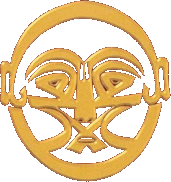 W
WThe Buyruks are a collection of spiritual books providing the basis of the Alevi value system. The word buyruk in Turkish means "command". Topics addressed in the Buyruks include müsahiplik "spiritual brotherhood" and a wide range of Alevi stories and poems. The story of Haji Bektash Veli is found in them.
 W
WThe Epistles of Wisdom or Rasa'il al-Hikmah is a corpus of sacred texts and pastoral letters by teachers of the Druze Faith, which has currently close to a million faithful, mainly in Lebanon, Syria, Israel and Jordan.
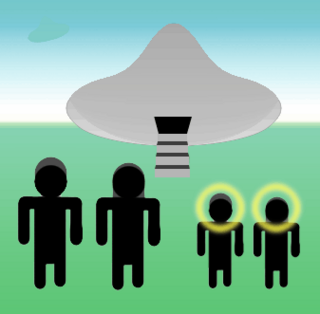 W
WGeniocracy is the framework for a system of government which was first proposed by Raël in 1977 and which advocates a certain minimal criterion of intelligence for political candidates and also the electorate.
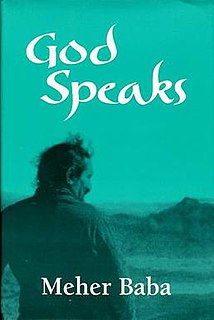 W
WGod Speaks: The Theme of Creation and Its Purpose (ISBN 978-0-915828-02-9) is the principal book by Meher Baba, and the most significant religious text used by his followers. It covers Meher Baba's view of the process of Creation and its purpose and has been in print continuously since 1955.
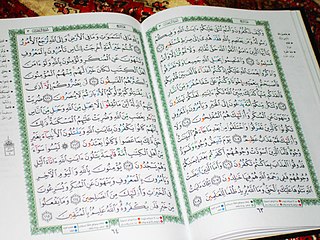 W
WHistorical reliability of the Quran concerns the question of the historicity of the described or claimed events in the Quran.
 W
WThe Jade Record or Yuli (玉曆) is an illustrated religious tract that circulated in various versions and editions in the 19th century in China. It has some folk-Buddhist and Daoist features and describes the horrors of Diyu that await bad people.
 W
WKirat Mundhum, also known as Kirati Mundhum or Kiratism, are the stories recited/sung by the shamans of the Kirati ethnic groups of Nepal, Darjeeling and Sikkim: Limbu, Rai, Sunuwar and Yakkha peoples. The practice is also known as Kirat Veda, Kirat-Ko Veda or Kirat Ko Ved. According to some scholars, such as Tom Woodhatch, it is an animistic religion or blend of animism, and Saivism. It is practiced by about 3.1% of the Nepali population. It's Limbu language slogan is,.
 W
WMalfūzāt is a ten-volume collection comprising the discourses, question-and-answer-sessions, sermons and dialogues of Mirza Ghulam Ahmad, the founder of the Ahmadiyya movement. The volumes contain, for the most part, speech that was transcribed by several of Ghulam Ahmad's close disciples as it was being communicated and was published in Ahmadi periodicals during his lifetime, covering a period starting from 1891 until his death in 1908. This material was compiled and published as a set of volumes during the 1960s.
 W
WThumbnail Quran or Miniature Quran are tiny-written Qurans having 2 types: Modern and Antique. Newer versions are produced in China, United Arab Emirates and Iran. But the antique versions can have almost 2 cm length, 1.5 cm width and 1 cm thickness. Some of them in hexagon or octagon shapes and with a metal box and a gilded leather wrapper. Very antique versions have fragile papers may be Foxed in contact with air. Many versions date back to the Ottoman Empire era in Turkey, in Egypt dating back possibly to the Khedivate of Egypt, and production of them in England during WWI. Some are also written in different translations, such as Persian.
 W
WThe Mozi, also called the Mojing or the Mohist canon, is an ancient Chinese text from the Warring States period (476–221 BC) that expounds the philosophy of Mohism. It propounds such Mohist ideas as impartiality, meritocratic governance, economic growth and aversion to ostentation, and is known for its plain and simple language.
 W
WOahspe: A New Bible is a book published in 1882, purporting to contain "new revelations" from "...the Embassadors of the angel hosts of heaven prepared and revealed unto man in the name of Jehovih..." It was produced by an American dentist, John Ballou Newbrough (1828–1891), who reported it to have been written by automatic writing, making it one of a number of 19th-century spiritualist works attributed to that practice. The text defines adherents of the disciplines expounded in Oahspe as "Faithists".
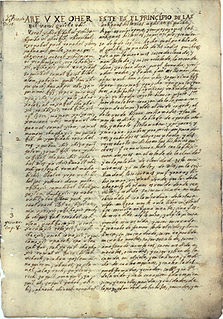 W
WPopol Vuh is a text recounting the mythology and history of the Kʼicheʼ people, one of the Maya peoples, who inhabit the Guatemalan Highlands, Mexican Chiapas, Campeche and Quintana Roo states, and areas of Belize.
 W
WThe Pyramid Texts are the oldest ancient Egyptian funerary texts, dating to the late Old Kingdom. They are the earliest known corpus of ancient Egyptian religious texts. Written in Old Egyptian, the pyramid texts were carved onto the subterranean walls and sarcophagi of pyramids at Saqqara from the end of the Fifth Dynasty, and throughout the Sixth Dynasty of the Old Kingdom, and into the Eighth Dynasty of the First Intermediate Period.
 W
WThe Quran, also romanized Qur'an or Koran, is the central religious text of Islam, believed by Muslims to be a revelation from God (Allah). It is widely regarded as the finest work in classical Arabic literature. It is organized in 114 chapters (surah, which consist of verses.
 W
WThe Urantia Book is a spiritual, philosophical, and religious book that originated in Chicago sometime between 1924 and 1955. The authorship remains a matter of speculation. It has received various degrees of interest ranging from praise to criticism for its religious and science content, its unusual length, and its lack of a known author.